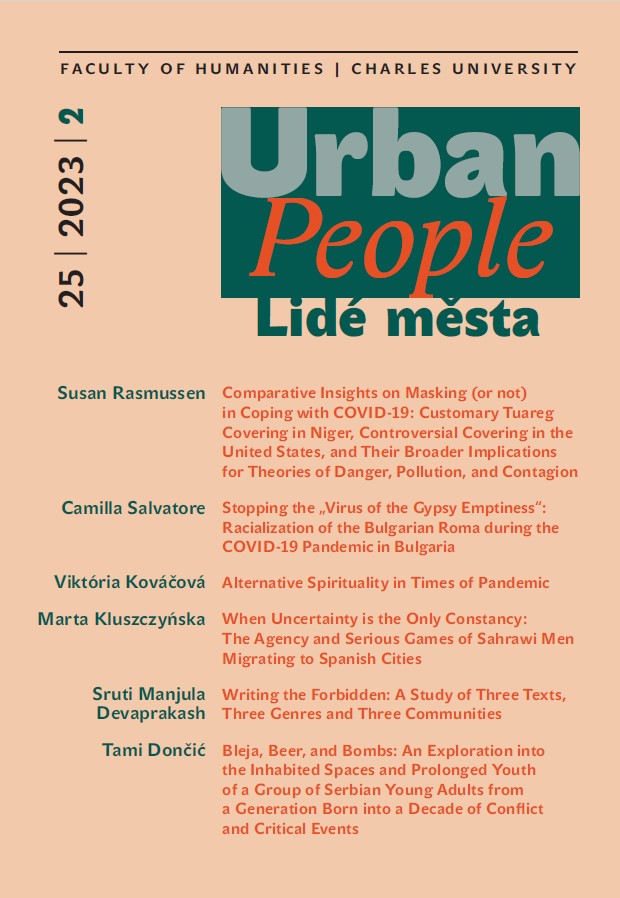
We kindly inform you that, as long as the subject affiliation of our 300.000+ articles is in progress, you might get unsufficient or no results on your third level or second level search. In this case, please broaden your search criteria.


Three texts have been chosen for this study: Daya Pawar’s lifenarrative Baluta, Perumal Murugan’s historical fiction One Part Woman, and Hansda Sowvendra Shekhar’s short story collection The Adivasi Will Not Dance. These writers hail from various subaltern groups of the Indian subcontinent, with diverse ethnicities. Besides subalternity, a significant thread connecting these texts is that the writers’ respective communities took offence at the portrayal of their cultures. This study explores the self-representation of the community through a close reading of the texts, and theorizes the relationship between the writer, narrator, characters, and the community. The paper analyses how the writer employs the community in the narrative and the role this plays in the respective spatiotemporal contexts of the texts. Given the chosen texts are of different genres – a Dalit life-narrative, a historical novel, and short stories – the paper also explores the genre-ic/form-al differences in the representation/use of the community.
More...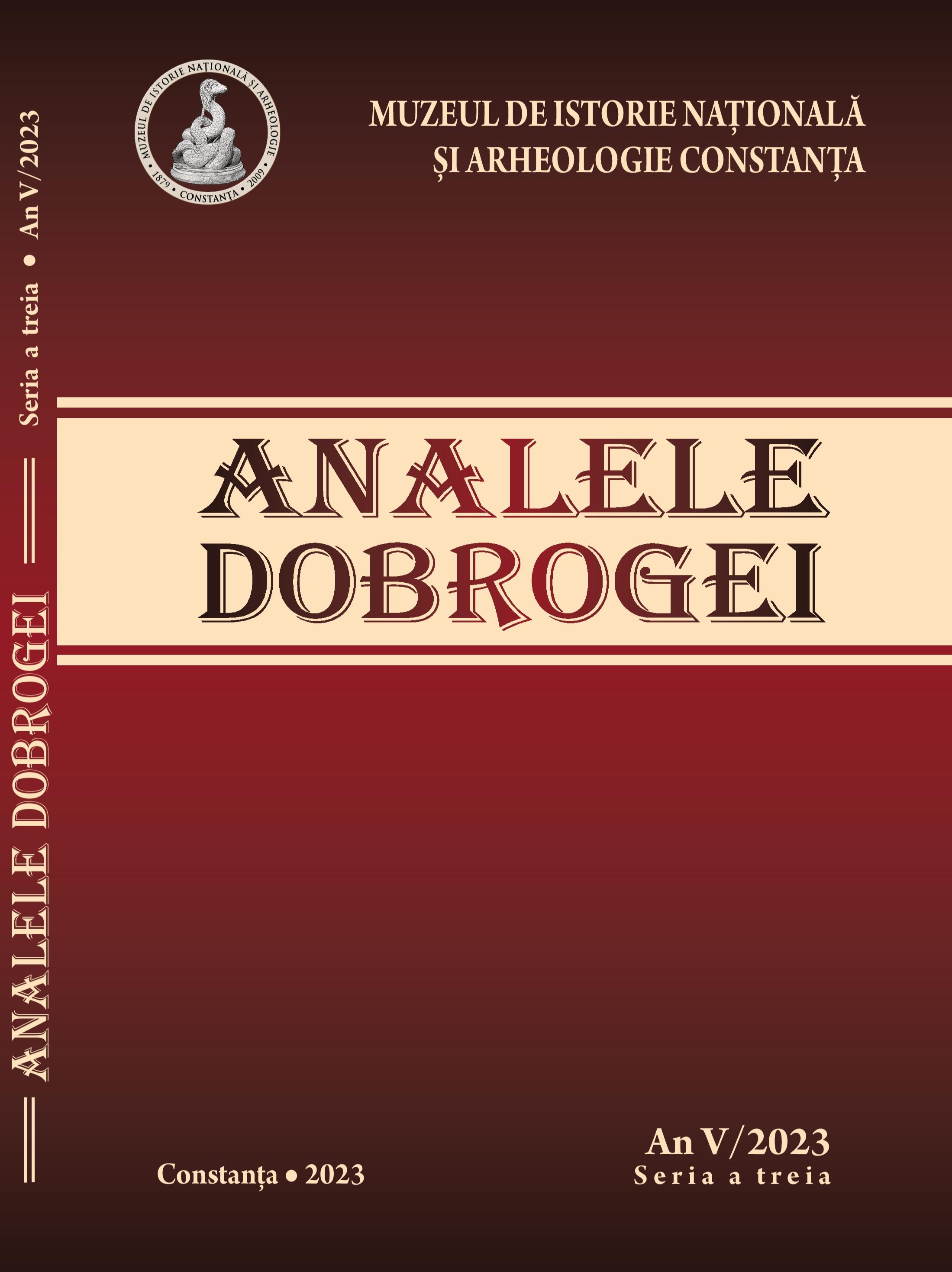
At the end of the 19th century, Dobruja appears like a conglomerate of ethnic groups, belief systems and life habits. Dobrujan Romanians, either we speak about those who had lived for centuries in this area, or about the colonists coming from all historical provinces, create specific demographic structures emphasized by `Hașdeu Survey`, between 1884 and 1885, and, after ten years, by `Densușianu Surveys`, in 1893 and 1897. Fundamentally, both B. P. Hașdeu and Nicolae Densușianu were preoccupied to highlight the linguistic, folklore, ethnographical and cultural elements, specific to each historical provonces, this time, speaking about Dobruja, with an effort to identify the age of oral circulation in the Romanian territories of myths and legends to attest the beginning of the history of the nation.
More...
Review of: Gheorghe Dumitrașcu, Corina-Mihaela Apostoleanu: The rural space of Dobruja at the end of the 19th century. The Densușianu Questionnaires, Celebris Publishing House, Constanța, 2022, 393 p.
More...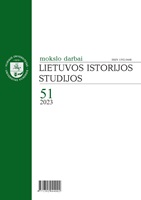
The article examines the legal status of the navigable rivers of the Grand Duchy of Lithuania (further – GDL) in the 16th–18th centuries, based on Lithuanian Statutes, Sejm resolutions (constitutions), city privileges, other legal sources, and historiographical data. The problem of the content and usage of the term "navigable river" found in multilingual sources is examined. The study showed that this term contained two meanings: it indicated the physical characteristics of rivers and defined their legal status as a free path. In these rivers, it was forbidden to build any obstacles that make navigation difficult (fish traps, mill dams, or other barriers) and to collect new "unusual" customs duties. In the GDL’s law, the problem of shipping obstacles has been tried to solve in two ways: a) by specifying the obstacles to be removed physically and/or providing fines; b) by the mandatory installation of gates in fish traps and dams.
More...
The article examines how the modern position of the peace arbitrator, the idea of which was borrowed from the ‘court of arbitration’ functioning in the Western world, emerged and was used in the governance structure of the Russian Empire. It reveals the role of the peace arbitrator in the administration and transformation of the post-serfdom village in the governorates of Vilnius, Kaunas, and Hrodna. The following stages in the activities of peace arbitrators are distinguished: (1) 1861–1862, when local landowners chosen as peace arbitrators managed the post-serfdom village, and (2) the time after the 1863–1864 uprising, when attempts were made to turn the Russian peace arbitrators, who had replaced the landowners in this role, into a tool of the Russification of the village. The analysis reveals the independence of the activities of peace arbitrators, which used to cause conflicts with the governorate authorities, police, and military structures.
More...
Vilnius University Library possesses in its collections the personal library of distinguished historian, Joachim Lelewel (1786–1861), an alumnus and a professor of the Imperial University of Vilna. It consists of books, atlases, maps and other stocks gathered by Lelewel during his exile in Paris and Brussels. In his will, Lelewel bequeathed his library to Vilnius University, should that remembrance institution be restored. The library was tem-porarily stored at several locations, such as the Polish School at Batignolles (Paris), and Kórnik Library after 1874. In the fall of 1919 Vilnius University was reestablished by the Polish government under the name Stefan Batory University. The institution inherited former university’s meager library which had experienced heavy losses and deprivation during the decades of the Russian rule. Bringing to Vilnius extensive assets of printed and archival records gathered by the Polish emigrants in Western Europe through the 19th century was a great opportunity for the university library as it might significantly enrich its modest possessions. Lelewel’s personal library as well as Library and Archives of the Polish Museum at Rapperswil (Switzerland) were considered as first to be transferred. This article uses archival data to reconstruct almost a four-year long (February 1922 – end of 1925) journey of the Lelewel’s library from Kórnik to Vilnius.
More...
Review of: Kari Alenius, Saulius Kaubrys, Balancing Between National Unity and Multiculturism: National Minorities in Lithuania and Finland 1918–1939, Paderborn: Brill Schoning, 2022.
More...
Review of: Regina Laukaitytė, Pokaris Lietuvoje. Belaukiant išlaisvinimo, Vilnius: Lietuvos istorijos institutas, 2022.
More...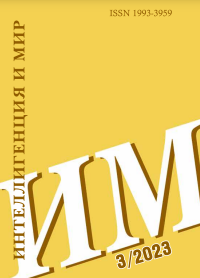
The review considers the monograph by P. N. Bazanov “The Tsar and the Soviets: Russian emigration in the struggle for Russian statehood: political and publishing activities”. Petr Nikolaevich Bazanov is the author of several hundred publications on the history of Russian emigration of the XX century, Doctor of Historical Sciences, professor, professor at the St. Petersburg Institute of Culture. The monograph under review is the logical conclusion of a series of publications devoted to the post-revolutionary movements of the Russian emigration and their publishing activities in the 1920s-1930s in Europe. The classification of post-revolutionary organizations is based on the principle of ideological views and attitudes towards Soviet power. The book shows the process of formation of such organizations as Smenovekhists, post-revolutionaries, Young Russians. Much attention is paid to the periodicals of post-revolutionary organizations in the monograph. They were the mouthpiece of the movements, reflecting their ideological views and spreading ideas among the emigrants. A feature of the work was the detailed and informative section “Notes”, which, in terms of content and completeness, claims to be a separate chapter. Extensive biographical information and references to sources and literature leave the most favorable impression of the work. Another positive feature of the book is a carefully designed scientific reference apparatus. The problem of the relationship of the studied movements to the impending world war is especially noted. The author fits each movement into a historical context, showing the attitude towards fascism, and in general gives an assessment to which position of defencism or defeatism the members of the organizations under study gravitated. The monograph is replete with interesting materials from the Archive of the Russian Diaspora of the Cultural Center of the House-Museum of Marina Tsvetaeva, the Archive of the Office of the Federal Security Service of the Russian Federation for St. Russian Diaspora of the Russian National Library, Department of Russian Abroad Funds of the State Public Library, Russian State Military Archive, Manuscript Department of the Institute of Russian Literature, V. S. Obolensky, which were little known to readers. It is also organically complemented by a list of sources and references, a detailed name index, which greatly facilitates the work with a scientific publication. The importance and usefulness of the monograph under review is beyond doubt.
More...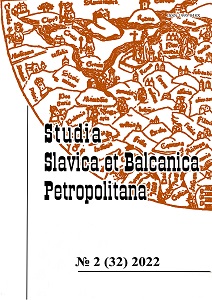
One of the key-points of the socio-political discourse in the Russian Empire in the XIX - early XX centuries was Slavic question. Ukrainian question was its particular manifestation. The aggravation of discussions on the Slavic issues, as a rule, followed the dynamics of foreign policy. Interest in the Ukrainian issue increased due to the adoption of censorship measures by the Russian state, which varied from tightening to softening of the censorship regime. The Ukrainian question in Russian socio-political thought was debated mainly in the discussion, if the Ukrainian («Little Russian») people represent an independent ethnic group or is a local version of the «Great Russians». Depending on the answer to this question, the ideal structure of the Russian state was going to be worked out. The Imperial St. Petersburg Academy of Sciences took an active part in the discussion of the Slavic question in general (and that of Ukrainian in particular) and in the adoption of appropriate measures, acting as an expert body. Discussions were conducted not only at the institutional level, but also at the private one. In research literature, the scholarly world on this issue is divided into two camps, one of which (liberal-nationalist) was represented mainly by P. B. Struve, and the other - by his numerous opponents (for example, by F. E. Korsh). As documents from the Archive of the Russian Academy of Sciences show, the history of discussion on the Ukrainian issue before the First World War was broader, more scholars, also representing the Academy of sciences were involved. In particular, the position of one the most prominent European Slavist of the late XIX - early XX centuries I. V. Jagić deserves attention. His position on the Ukrainian problem, which worried Jagić for several decades, is especially pronounced in the last letter to F. E. Korsh dated April 9 (22), 1912.
More...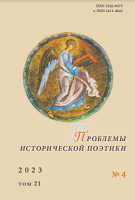
The article attempts to reconstruct the historical thinking of M. Yu. Lermontov and his contemporaries. Political, religious, and socio-psychological aspects of the relationship between the socio-cultural systems of Russia and the North Caucasus are revealed through the comparison of the poet’s notebooks and notes from the Journal of Military Operations, historical journalism, official documents of the 1830s. The article presents rare materials from the archives of the Russian National Library, the Russian State Library, the Institute of Russian Literature (Pushkin House) of the Russian Academy of Sciences. The manuscripts directly related to Lermontov’s military service in the Caucasus, official documents prepared on special instructions of the General Staff of the Russian Imperial Army, diaries and reflections of Lermontov’s contemporaries containing records of his stay in Caucasian expeditions are considered. Based on the figurative and stylistic analysis of individual entries of the Journal of Military Operations, their belonging to Lermontov is postulated. The emphasis is placed on the integration of the knowledge of a professional military man, a participant in the Caucasian events and the artist’s exploration of the world with his special perception of reality in Lermontov’s style. The systematization of archival sources and the analysis of the opinions expressed in them about the relationship between Russia and the Caucasus made it possible to recreate the context in which Lermontov’s historiosophy was formed, to determine the influence of public sentiment on the formation of the poet’s historical thinking. As a result, the leading ideological constants in the assessment of historical events correlating with Lermontov’s Caucasian historiosophy are revealed in handwritten essays of the 1830s.
More...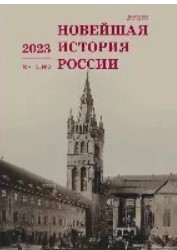
Based on the materials of the Penza region, the problem of the formation of “Soviet modernity” in the consciousness and practices of political management of the regional elite during the 1960s–1970s is considered. The authors agree with M. David-Fox’s position on Soviet modernity as another type of industrial society, ex-pressed through ideological and cultural representations and behavioral strategies established in the minds and psychology of the elite and society as a whole. The analysis of recruiting, social composition, mental attitudes and aspirations of the regional elite, the results of regional identity formation in the 1960s–1970s was carried out on the basis of the sources of mass origin, documents of Party and Soviet governing bodies, diary records and memoirs. The chronotope of development of the Penza region in this period was due to the later terms of the territorial organization, the processes of industrialization and regional specialization of industrial production. The general trend of changes can be characterized as a situation of unprecedented and unrestrained, in some ways rampant industrial construction, construction of housing and social and cultural facilities. The most important conditions for the formation of the local elite as carriers and generators of new attitudes and values are considered: the socio-economic transformation of the region, its transformation from a backward agricultural to one of the centers of the military-industrial complex of the USSR; as well as the process of mass promotion of leaders in the 1950s–1960s. Most of them were natives of the Penza region, people 30–40 years old, came from the workers and peasants, with higher, usually technical, education, hard military youth, about one-third — participants in the Great Patriotic War, about half — former Komsomol leaders.
More...
Robert Graves brit történész Én, Claudius című történelmi regényének egyik jelenetében megvilágítja a történetírás örök dilemmáit, amikor is Titus Livius, az agg a római polgárháborús részvétele mellett egy balkáni hadjáratot is sikerrel irányító Pollió szemére veti, hogy az utóbbi a szórakoztató stílust feláldozza a tárgyilagosság érdekében. Azon vádra, hogy „személyeit lelkiismeretes unalmassággal” mozgatná, és személyeitől „megtagadná a szónoki képességeket”, az előbbi azt válaszolja: „A költészet költészet […] a történelem történelem, és nem lehet őket összekeverni.”
More...
„...akkor még szilárdan állt az NDK-féle szocializmus”. Interview with Juliane Brandt.
More...
Review of: Fata Márta: Mobilität und Migration in der Frühen Neuzeit. Einführungen in die Geschichstwissenschaft. Frühe Neuzeit. Band 1. Vandenhoeck & Ruprecht, Göttingen, 2020. 248 oldal.
More...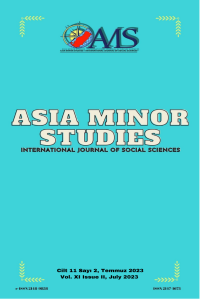
After the War of Independence was completed, Mustafa Kemal Atatürk wanted to raise Turkey to the level of modern civilizations. The first condition for the society to progress in the economic, cultural and social fields is to have healthy individuals. After the establishment of the Republic, the former Gureba Hospital was transformed into Ankara Numune Hospital to provide health services to the public. However, professors who are experts in their fields were needed for this hospital. Since Anatolia has been at war for many years, there has been a shortage of qualified personnel. The government invited professors from Germany to Turkey as a solution. Important professors such as Eduard Melchior, Alfred Marchionini, August Laqueur, Max Meyer, Ernst Magnus-Alsleben and Albert Eckstein came to Ankara Numune Hospital. Albert Eckstein was assigned to establish the pediatric clinic at Ankara Numune Hospital. He laid the foundation of Turkish Pediatrics. He worked on epidemic diseases and child deaths in the country. During Eckstein's stay in Turkey, child mortality has greatly decreased. He toured Anatolia and its villages. He made investigations about infant deaths and epidemic diseases. He reported these examinations and presented them to the Ministry of Health. He explained to the villagers the methods of combating diseases. He has enabled the training of important pediatricians in Turkey. He left Turkey in 1949, returned to Germany and started to work at the Hamburg Medical Faculty Pediatric Clinic. This article aims to explain the contributions of German Scientists who came to Ankara Numune Hospital to both the hospital and the country's health policy. Especially the studies of pediatrician Albert Eckstein in Turkey and his achievements in the field of pediatrics were mentioned. Thanks to the work of German scientists, important Turkish doctors have been trained. Turkish medicine has always been grateful for his work.
More...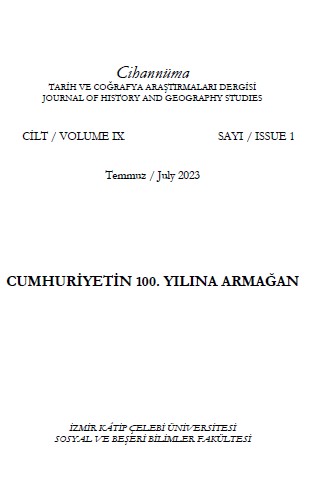
Gölde, İncesu as it is known today, is a rural settlement in Manisa Province, Kula District. The settlement has lost its population to a large extent and mostly inhabited by elderly today. But, it has been the common living area of Muslim Turks and Orthodox Rums throughout the 19th century and at the beginning of the 20th century. The forced migration of Rums after the War of Independence and the following rural exodus starting from 1950s onwards resulted with a massive population loss; thus the traces of the previous common life on the built environment began to disappear. This study aims to understand characteristics of Gölde when it was inhabited by two communities. The study utilizes Ottoman archival documents, oral history studies and site survey. Well preserved built environment and oral history studies ease understanding the architectural as well as socio-economic characteristics of Gölde at the turn of the century. Ottoman archival sources are silent about architectural characteristics, but economic and social changes of the first half of the 19th century can be traced. These archival documents also help interpretation of the information coming from oral history studies. For this reason, the text does not follow a chronological order; it focuses at the turn of the 20th century and calls the archival data of 19th century for a comprehensive evaluation together with oral history studies and field survey findings.
More...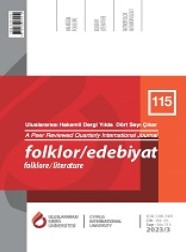
This study examines the history, language, social, and economic transformation of the Yuruks living in the Yamanlar Village located in the Karşıyaka district, where there is relatively little information in the literature despite its proximity to the Izmir city center. Information collected from the Ottoman Era cemetery adjoining the village reveals that the Yamanlar Yuruks have lived here for at least 400 years. Mount Yamanlar, where the village is located, is of great importance because of its ancient history, as it witnessed the founding of Izmir (Smyrna). The social and economic lifestyle in the village has transformed as the city expanded toward residential areas atop Mount Yamanlar. The loss of traditional livelihood practices challenged the villagers and severely influenced their customs, which might be considered valuable pieces of cultural heritage. In this study, we conducted fieldwork, during which various data collection methods and techniques were employed to describe daily life in the village. Within the scope of this study, semi-structured and unstructured interviews were conducted with the local people, and an oral historical study was carried out. With this method, we aimed to present an ethnohistorical description of the Yamanlar Village by trying to establish a balance between the analysis of both written documents and oral data to make sense of the social and economic change it has undergone and to contribute to the literature on Izmir Yuruks.
More...
This study evaluates the historical significance of canaries in human history as well as their position in late Ottoman culture and daily life. The relationship, that people have developed with nature since hunter-gatherer societies, has evolved to its present state by becoming integrated with the advancement of civilization. The genus Serinus, to which the canaries belong, and which is one of the original examples of this bond, has been in the field of interest of human relations and communications since early times. However, the original Serinus genre of the Canary Islands, was transformed into a capitalist consumption commodity as a result of new geographic discoveries in the XV and XVI centuries. Curiosity regarding canaries and their trade was met with interest in the Ottoman society too. The bonds that the nomadic Turks formed with animals and birds influenced Seljuk and Ottoman cultural elements, making the canary a part of Ottoman daily life. It is noteworthy that this creature was reflected in literary texts, folkloric elements, books, and archive documents with various narratives, particularly in the last years of the Ottoman Empire. This study is a qualitative inquiry into the history of the Canaries and how they influenced Ottoman cultural life. The data of the study were obtained from documents, books, and articles from the late XIX and early XX centuries, including today’s literature. This study reveals that throughout the course of human history, canaries have been subjected to cultural, economic, and aesthetic definitions and perceptions.
More...